Cuernavaca, Morelos 作者: 来源: 发布时间:2021-11-15
1.Population and Area
Pop: 366,321 (munip.)
Area: 151.2 km2 (munip.)
Elev: 1510 masl
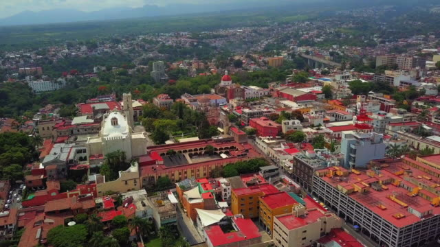
Cuernavaca location in Mexico within the state of Morelos
https://goo.gl/maps/Rs2aQCvP98Wy4kes5
2. Natural geography
Nature and weather
Hydrography
During the rainy season, rivers are formed in the ravines of Minaltepec, Ajomulco, Los Caldos (with the San Anton Falls), Los Pocitos, 'El Pollo and El Chiflón; together they form the Cuernavaca River. The riverbeds of Tepoztitlán and Mexicana form the Río Tembembe.
Other streams are in the gulch of las Canoas (which crosses Tetela del Monte and joins the Atzingo), the Tecolote (which forms the San Anton waterfall), the Amanalco (which drains in the Río Apatlaco), the Otates, the Santa Úrsula (which drains into the Río Tetlama), and the Muerto (which begins in Ahuatepec and crosses Flores Magón). The springs in Cuernavaca are: Los Atzingo, el túnel de Santa María, Sanguijuela, Huitzilac, Axomulco, and Chapultepec. The municipality is located in the Amacuzac River Basin.
Flora and fauna
The flora of Cuernavaca is very varied according to its areas:
North zone: it is covered by mesophilic mountain, pine and oak forests.
Extreme south: induced grassland predominates with secondary conditions of low deciduous forest, represented by tall herbaceous plants such as castor and acahuales.
In the ravines that are located to the west and in those that cross the city, different varieties of trees such as ash, jacaranda, plum, willow, amate and guava are appreciated.
Inside the ravines, in the humid parts there are still gallery forests, which are ceasing to exist due to the growth of the population.
The fauna of Cuernavaca is made up of white-tailed deer, raccoon, skunk, squirrel, mountain mouse, puma or American lion, moctezuma quail, little goose, dove, blue magpie, goldfinch, florican mulatto, red spring; rattlesnake, rattlesnake, frogs and lizards.
Köppen Classification: Tropical Savanna Climate
Tropical savanna climates have monthly mean temperature above 18°C (64°F) in every month of the year and typically a pronounced dry season, with the driest month having precipitation less than 60mm (2.36 in) of precipitation. In essence, a tropical savanna climate tends to either see less rainfall than a tropical monsoon climate or have more pronounced dry seasons than a tropical monsoon climate. Tropical savanna climates are most commonly found in Africa, Asia and South America. The climate is also prevalent in sections of Central America, northern Australia and North America, specifically in sections of Mexico and the state of Florida in the United States.
The Köppen Climate Classification subtype for this climate is "Aw". (Tropical Savanna Climate).
The average temperature for the year in Cuernavaca is 71.1°F (21.7°C). The warmest month, on average, is May with an average temperature of 75.9°F (24.4°C). The coolest month on average is January, with an average temperature of 67.3°F (19.6°C).
The highest recorded temperature in Cuernavaca is 113.0°F (45°C), which was recorded in June. The lowest recorded temperature in Cuernavaca is 33.1°F (0.6°C), which was recorded in February.
The average amount of precipitation for the year in Cuernavaca is 37.1" (942.3 mm). The month with the most precipitation on average is June with 8.0" (203.2 mm) of precipitation. The month with the least precipitation on average is February with an average of 0.1" (2.5 mm). In terms of liquid precipitation, there are an average of 103.5 days of rain, with the most rain occurring in July with 19.6 days of rain, and the least rain occurring in December with 0.9 days of rain.
https://www.weatherbase.com/weather/weather-summary.php3?s=767260&cityname=Cuernavaca%2C+Morelos%2C+Mexico&units=
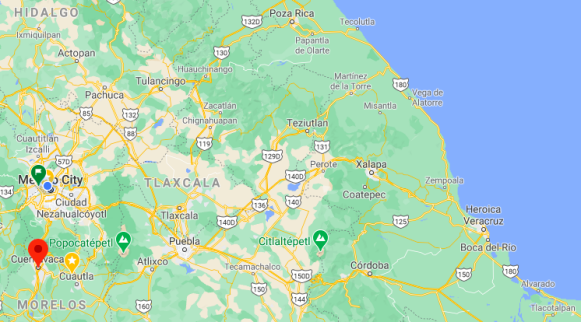
Getting there and around
Get there
By plane – There’s a small airport here, which receives some domestic flights although most people drive or take the bus from Mexico City. Ground transportation is available from the airport to the center of town.
By car – Driving to Cuernavaca is very fast and efficient with a six-lane toll highway direct to Cuernavaca from Mexico City.
By bus – You can travel to Cuernavaca on a first-class bus from Mexico City— the trip takes between 60 and 90 minutes — depending on the weight of traffic in and out of the capital. Buses are frequent and this is the most common way of getting to Cuernavaca from Mexico City besides driving a car. Buses can be boarded at the southern bus terminal (Central de Autobuses del Sur), and now also directly from the airport in Mexico City.
https://www.mexperience.com/travel/colonial/taxco
Car Rental – To explore Mexico’s provincial towns and cities—including its beach locations and the scenery and attractions near them— consider renting a car for your visit. Having your own car will give you more flexibility than using public transport options and, in some cases, offer you access to places which are otherwise difficult to visit without the use of a car.
COVID19 – International entry into Mexico from United States
Allowed for: All visitors arriving by air. Mexico land borders are closed to non-essential travel
Restricted for: There are no current restrictions.
Get around
Local Buses – Local buses and mini-buses (combis or micros) are available locally for a fraction of the cost of a taxi around town. You need to speak Spanish to be able to ask for directions or ask the driver to tell you where to get off.
Taxis – Taxis in most of Mexico’s towns and cities are not metered, so agree your price before you get in. Taxi travel is very affordable in Mexico, in comparison to the USA, Canada and Europe, and so provides a viable means of public transportation in Mexico. Your hotel can arrange taxis for you; some post their rates on a board in the lobby; taxi hotel rates are usually higher than cabs you hail off the street. If you speak Spanish, you will have a distinct advantage and be able to negotiate a price with the driver.
Uber is expanding rapidly across Mexico and now offers services in cities across the country, including: Mexico City, Toluca, Cuernavaca, Puebla, Querétaro, León, Aguascalientes, San Luis Potosí, Guadalajara, Monterrey, Hermosillo, Tijuana, Mexicali, and Mérida. Uber has been adding Mexican cities to its network every year, check for availability when you arrive at your destination in Mexico.
Cabify and Didi are also developing and currently operate in cities including Mexico City, Toluca, Monterrey, Puebla, Querétaro and Tijuana. Check for availability in the city you are visiting.
These services offer people with smartphones a way to book a cab through a mobile app for a pre-agreed price. Fares are comparable with Sitio type cabs, and sometimes trade at a premium to this when local demand increases.
https://www.mexperience.com/travel/colonial/cuernavaca
https://www.mexperience.com/transport/taxi-travel-in-mexico/#51
3. ECONOMY
GDP: 131,859.88 M MXN (2017)
https://indicedeciudadessostenibles2018.lnpp.cide.edu/resources/Informaci%C3%B3n_por_zona_metropolitana.pdf
4. Industry characteristics
Most of the economic activity in the municipality is retail trade, concentrated in and around the city of Cuernavaca. Agriculture and fish farming employ the fewest people, although the municipality contains a good quantity of resources for these enterprises. The far north of the municipality generally is not suited to agriculture, due to the terrain and types of volcanic soil found there. Most agriculture is concentrated in the southeast. The lower elevations, at around 1,800 metres (5,900 feet), is best-suited for fishing and fish-farming. The middle range, between 1,800 and 2,100 metres (5,900 and 6,900 feet), has uses mixed between agriculture and forest products, and the elevations higher than 2,100 metres (6,900 feet) are primarily forest. Fish farming areas are under pressure from urban development, especially in the Ahuatepec region east of the city, where irregular and sometimes illegal, housing developments are appearing among the farms.
On the outskirts of Cuernavaca, there are a handful of plant nurseries, specializing in the planting, growing and distribution, including international shipments, of plants, flowers and seeds. Many famous gardens around the world are supplied with flowers from the Cuernavaca region.
Industry is minimal and mostly limited to micro-industries such as printing, framing, ceramics, garment-making, and the production of cleaning supplies. This employs about 28% of the population. Most of the population (67%) is employed in the retail and service industries, both dependent on tourism.
Crafts from this area primarily consist of ceramics and wax products. The wax used is from bees and generally it is shaped into capricious figures. Flowerpots and clay objects from San Antón, handcrafted paper from wood chips with multicolored paintings, and wood lacquered masks are other products of the municipality.
Key project: Land connection project to Cuernavaca Airport
The plan consists of building a bypass to the northeast of the city of Cuernavaca of 41.6 kilometers in length, which would connect Mexico City with the air terminal located in the municipality of Temixco, for which an investment of 8.918 million pesos is required.
Likewise, the construction of the transversal axis: Apatlaco Bridge-Mariano Matamoros Airport, 6.95 kilometers long, which includes three bridges that will connect the state capital, from the Apatlaco bridge, with the Mariano Matamoros Airport, for which purpose contemplates an investment of around 890 million pesos.
The relevance of this work is that it will guarantee greater projection to the Morelos airport and permanent and safe passage for users at any time of the year.
The objective is to detonate the economy and tourism in the region, benefiting more than 507,000 inhabitants of the towns of Cuernavaca and its surroundings; liberating the airspace of Mexico City by becoming an option for users who travel by this means.
https://www.eleconomista.com.mx/estados/Morelos-presenta-proyecto-de-conexion-terrestre-al-Aeropuerto-de-Cuernavaca--20190802-0036.html
5. Attractions
Archaeological Zone of Xochicalco
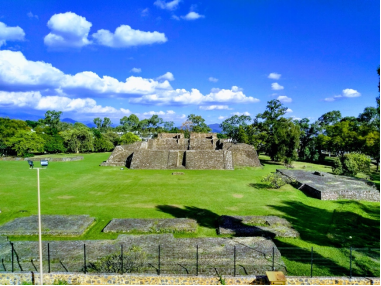
Admire the ingenuity and artistry on display at Archaeological Zone of Xochicalco, a complex of pre-Columbian structures and buildings. In its heyday, circa 700-900 CE, the old city had a population of around 20,000; most of the buildings on site date from this period. Among the many structures of interest across the large site, the most archaeologically significant is a temple built to honor the Feathered Serpent. Stylized carvings of the deity cover the temple, creating a detailed work of art.
Visit the ancient ruins with a small group. It is an hour drive; the area is about 10 hectars and about 11,000 people used to live there. The site has many temples, an acropolis and one of the very few observatorie. The Museum is so interesting that some of the relics and pieces found here are sometimes moved into the Antropological Museum in Mexico City.
https://www.inspirock.com/mexico/cuernavaca/archaeological-zone-of-xochicalco-a612117403
Palacio de Cortes
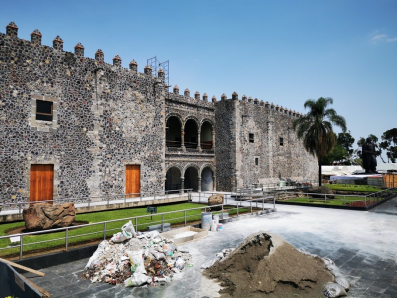
As the oldest colonial-era civil structure in the Americas, Palacio de Cortes showcases the history of the region and colonial Mexico. Built in 1526 as a residence for the conquistador Hernan Cortez, the building originally had the double purpose of exerting authority over the conquered natives. Later the structure became a barracks and jail, housing prisoners of war during the war for independence. Currently the building serves as a museum showing the history and artifacts from colonial times and earlier. You can view artifacts from other Spanish colonies and the oldest clock in America; most of the information is only available in Spanish.
https://www.inspirock.com/mexico/cuernavaca/palacio-de-cortes-a25844515
Taxco’s panoramic views
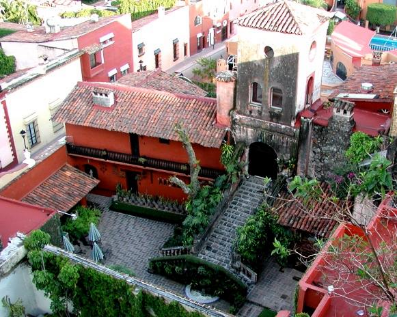
Robert Brady Museum occupies a 16th-century building that served as the residences of a noted American artist, who spent as much time collecting as creating art. You'll find over a thousand pieces here, including carvings, paintings, textiles, and folk artifacts Brady picked up on his travels around the world. Look for works by well-known artists, including Frida Kahlo and Diego Rivera. Brady's own works include a portrait of his friend and fellow art lover Peggy Guggenheim. The museum often hosts screenings of classic films, as well as other events and activities.
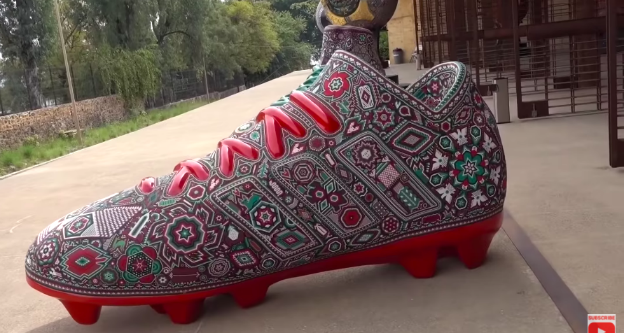
HOW TO LOVE CUERNAVACA - LAND OF ETERNAL SPRING, MEXICO
https://youtu.be/hoQLJ4SoLtE
6. History
Indigenous peoples
Burials dated to c. 1000 BCE have been found in Gualupita, Morelos, in the north of the city.
The first major culture to inhabit this area was the Tlahuica, whose main settlement was where the city of Cuernavaca is today. The Tlahuicas have inhabited this area at least since the 12th century.
The first incursions south into the area by peoples of the Valley of Mexico occurred in the 12th century, when a lord named Xolotl (ruler of Tetzcoco) conquered most of the Valley of Mexico. An allied Chichimeca tribe also moved south into what is now northern Morelos state, making Techintecuitla lord of the Cuahnahuac (as they called the city) area, with the Tlahuicas concentrated in the nearby towns of Yecapixtla and Yautecatle. According to the Tlatelolco Annals, in 1365, the lord of Cuahnahuac, Macuilxochitl, tried to conquer lands as far as the Valley of Mexico, but was met by the lord of Chalco, Tzalcualtitlan, with similar ambitions.
The first Aztec emperor, Acamapichtli, began to expand his empire to the south of the Valley of Mexico and beyond in the 1370s. His successor, Huitzilihuitl, was eager to press on into what is now Morelos state because of the cotton grown there, it was called Tlalnahuatl at that time. He asked to marry the daughter of the ruler of Tlalnahuatl but was rejected. That rejection started a war that ended with an Aztec victory in 1396. Huitziliuitl then married the princess and Moctezuma I was born of the union. Credit for the conquest of Cuernavaca is given to Acamapichtli in the Mendocino Codex, but later writings cite Itzcóatl, or even Moctezuma I, as the conqueror. The conquered dominion, Tlalnahuac, was roughly the size of the modern state of Morelos, and subsequently was renamed as Cuauhnahuac by the Aztecs.
From 1403 to 1426, this province grew in strength, subduing neighboring peoples such as the Coauixcas. Eventually, the province, then ruled by Miquiuix, rebelled against the Aztec Empire. This rebellion was put down by Totoquihuatzin and Netzahualcoyotl in 1433. This area then joined in the conquests of what now are known as Taxco, Tepecuacuilco, and Ocuilán. For tribute purposes, the dominion was divided into two zones, one headed by Cuauhnahuac and the other by Huaxtepec.
Spanish Conquest and colonization
At the time of the Spanish Conquest, Itzohuatzin was governing Cuahnanhauc. It was a rich city and densely populated, with large farms and its characteristic ravines bridged over. The Spanish marched on Cuernavaca even before taking the Aztec capital of Tenochtitlan. They were led by Gonzalo de Sandoval and he was joined later by the conquistador, Hernán Cortés. The bridges were destroyed to prevent the Spanish from entering the city, but they were able to cross on a fallen tree. The Spanish troops pillaged and burned the city before retiring to nearby Acapantzingo, where they celebrated the first mass in Morelos on Sunday, April 14, 1521, before continuing their march on the capital. The Spanish had difficulty pronouncing the Nahua name of the city and changed it to Cuernavaca.
Cortés returned to Cuernavaca in 1523, stopping in Tlaltenango, where he founded the Church of San José and constructed the first sugar plantation. The fertility of these lands compelled the conquistador to found his favorite residence here. Juana de Zúñiga, Cortes's wife, lived in Cuernavaca in the palace that was constructed in 1526. Cortes then moved the hacienda in Tlaltenango to Amatitlan. The Franciscans arrived in Cuernavaca in 1529 and founded their 5th monastery in New Spain there. This first group included Martín de Lua, Francisco Martínez, Luis Ortiz, Juan de Cervo, Francisco de Soto, Andrés de Córdova, Martín de Jesús, Juan Juárez, Juan de Motolinía, and Juan García de Cervo. Originally they lived at the San Francisquito hermitage, but later they constructed the open-air chapel, Capilla Abierta, at what was to become a monastery and eventually the Cuernavaca Cathedral. They extended their presence into the neighboring communities of Tetecala, Jiutepec, and Tlaquiltenango, among others, eventually forming the province of Santo Evangelio, which would be part of the province of Mexico in 1543.
In 1646, this province was reorganized several times. Cuernavaca and Cuautla became high mayorships which answered directly to the viceregal authorities in Mexico City. In 1786, New Spain was divided into twelve provinces and in 1824, Cuernavaca was initially a district of Mexico City.
Independence to Revolution
During the Mexican War of Independence, José María Morelos was imprisoned at the Palacio de Cortés in November 1815. Agustín de Iturbide's army passed through Cuernavaca to fight Vicente Guerrero in 1820 and came through again in 1821, as the head of the Trigarante Army. After Independence and with the Constitution of 1824, the territory now known as the State of Morelos became part of the State of Mexico. Between 1827 and 1829, Cuernavaca was a district of this state. From 1829 to 1833, it was called a prefecture. In 1833, the State of Mexico declared the Atlacomulco Hacienda, which contains the Palacio de Cortés and Cortés's houses in Coyoacán, to be public property.
In 1834, Ignacio Echevarría and José María Tornel drafted the Plan of Cuernavaca, which permitted Antonio López de Santa Anna to disregard the laws protecting church property, exile Valentín Gómez Farías, reopen the university, and dissolve the tribunal that was set to convict Anastasio Bustamante for the assassination of Vicente Guerrero. In the same year, the State of Mexico declared Cuernavaca to be a city.
During the Mexican – American War (1846-1847), Cuernavaca was captured by the Cadwalader Brigade and was forced to pay retributions to the U.S. Army after the Cuernavaca Infantry under Francisco Modesto Olabuibel fell.
During the Ayutla Rebellion in 1854, Santa Anna was forced out of the capital of Mexico City in 1855. He moved his government to Cuernavaca, reorganized it, and named a junta to elect an interim president. This board consisted of Valentín Gómez Farías, Melchor Ocampo, Benito Juárez, Francisco de P. Zendejas, Diego Álvarez, and Joaquín Moreno. They then voted for Alvarez as president. This new president swore to uphold the Plan of Ayutla and his inauguration was celebrated with much pomp in the city. Ministers from Guatemala, the United States, and Great Britain, as well as the Apostolic Delegate and the Consuls of Belgium, Chile, and some Asian countries, moved to Cuernavaca and recognized the government Álvarez.
In 1853, the District of Cuernavaca and the District of Mexico were declared separate.
During the Reform War (1857–1860) when conservatives rejected the liberal constitution of 1857, Juan Vicario voiced the cry of "Religión y Fueros" (Religion and Immunity) in Cuernavaca on 13 January 1858. In 1861, the Government of the State of Mexico created the districts of Cuernavaca, Jonacatepec, Tautepec, and Tetecala.
In order to facilitate operations against the French during the French Intervention, President Juarez divided the State of Mexico into three military districts. The third consisted of the territories of Cuernavaca, Yautepec, and Tetecala, with its capital in the city of Cuernavaca. Soon thereafter, this district fell into French hands. Maximilian I converted the Borda Garden into his summer residence and bought land in nearby Acapantzingo to construct a chalet. This prompted the construction of the Mexico-Cuernavaca highway.
When the French-installed monarch fell in 1867, Republican forces under Francisco Leyva, Ignacio Figueroa, and Ignacio Manuel Altamirano laid siege to Cuernavaca, which was defended by General Joaquín Ayestarán. The attackers cut off water supplies to the city and attacked on 3 January, but were met with a long series of street battles throughout the city. During the fighting, the general was killed and the Republican forces withdrew, victorious, to Mexico City, but only after burning a large portion of the city.
The State of Morelos was created in April 1869, with General Francisco Leyva as its first governor. Cuernavaca was declared the capital of the new state in November of the same year. In 1877, under Governor Carlos Pacheco, the Toluca-Cuernavaca highway was built and a rail connection created between Cuernavaca and Mexico City. The Porfirio Díaz Theater was opened in February 1882, and the first Public Health Board in the city was established the same year. In 1891, the Diocese of Cuernavaca was established by Pope Leo XII, comprising the entire state of Morelos, with Hipolito Vera as the first bishop of Cuernavaca. The first locomotive arrived on December 1, 1897, and a bridge was constructed to connect the center of the city with the train station. The Bank of Morelos was founded in 1903.
Mexican Revolution & 20th century
In 1909, the anti-reelection movement was established in Cuernavaca, and by the end of this same year guerilla operations against the Diaz government were headed by Genovevo de la O in Santa María Ahuacatitlán. Emiliano Zapata took over the movement in the south and named De la O in charge of the Cuernavaca area. On May 21, 1911, Cuernavaca was evacuated by government troops, leaving the entire state in rebel hands. Professor Brunk, describing Zapata's triumph, writes "On the twenty-sixth, at 4 o'clock on a bright Friday afternoon, Zapata rode triumphantly into that city at the head of four thousand troops. Waving images of the Virgin of Guadalupe overhead, these revolutionaries were a ragged lot in the eyes of the urbane. But to the throngs who greeted them - the common people of Morelos, the young girls with armfuls of bougainvillea - they were conquering heroes. " President Francisco I. Madero visited the city on June 12, 1911, and he attended a banquet in the Borda Garden. The city later fell to the forces of Huerta, and Zapata began to lay siege to Cuernavaca in May 1914 with 3,600 men, falling by August. Later, on January 26, 1915, the Revolutionary government was moved to the city, in defiance of Carranza and the Constitutionalists. However, Zapata lost control of Cuernavaca on May 2, 1916 and was forced to return to guerilla warfare.
The Spanish flu came to Cuernavaca in 1918, leaving only 3,000 survivors, although by May 1920 it had a population of 12,799.
Wealthy North Americans and Europeans established secondary residences in Cuernavaca and took long vacations there or frequently traveled back and forth, while servants maintained the haciendas in their absence. Sometimes, their offspring have made Cuernavaca their permanent residence, creating an enclave of natives with international roots bearing the influence of their cultures. For example, when the American designer, Michael van Beuren fled Germany with members of Bauhaus, where he was practicing his profession, he took up residence at the vacation hacienda of his parents in Cuernavaca, and stayed permanently, establishing his factory nearby and raising his family there. Others in his family began to reside there year 'round. Their children were natives of Mexico.
After his installation as U.S. Ambassador to Mexico in 1927, American businessman Dwight Morrow established a weekend home in Cuernavaca on the street that today bears his name. It was here that his daughter Anne met famed aviator Charles Lindbergh, whom Morrow had invited to Mexico. In celebration of his daughter's engagement to Lindbergh and to thank the people of Cuernavaca, in 1929 Morrow commissioned Diego Rivera to paint the mural "History of Morelos, Conquest and Revolution" at the Palacio de Cortes.
During the 1920s and 1930s, Cuernavaca became a place to vacation and gamble when the Hotel de la Selva was converted into the Casino de la Selva, which attracted people such as Rita Hayworth, Bugsy Siegel, and Al Capone to Cuernavaca, however, gambling was shut down by Lázaro Cárdenas in 1934. He is the same president who declared the area a ZPG (Forest Protection Zone). The casino hosted very important artistic works, including murals of Alvarez Icaza, Messeguer, and the architecture of Candela. The main vault was considered to be the "Mexican Sistine Chapel" by Nobel Prize author, Gabriel García Márquez.
1936 was the year that Malcolm Lowry wrote his short story, "Under The Volcano", which inspired his 1947 novel of the same name. It has never gone out of print and was made into a movie in 1984. Cuernavaca, or Quaunahuac, as it is called in the novel, and the surrounding area, figure prominently in this great historical novel, where extensive details on Mexican history, culture , topography, and especially, politics and religion figure prominently. The recurrent artifacts are the twin volcanos, Popocatepetl and Iztaccihuatl, and the barranca, symbols of division, death, and rebirth in the city of eternal spring.
Dr. Sergio Méndez Arceo became a bishop of Cuernavaca in 1952. Mendez was known as a leading voice of Liberation Theology and he was a human rights activist.
In 1956, Erich Fromm founded the Sociedad Mexicana de Psicoanálisis and from his house in Cuernavaca promoted new ideas in the field of psychiatry, incorporating Zen Buddhism and "communal psychoanalytic studies". This attracted many artists, composers, architects, and counterculture types here. In the 1960s, the city was one of the centers of the psychedelic movement. Timothy Leary tried psilocybin mushrooms there in the summer of 1960 and came back regularly to repeat the experience.
There was a riot in Cuernavaca in February 1957 after a police officer shot and killed Jorge Garrigós.
In 1966, Austrian priest Ivan Illich founded the Centro Intercultural de Documentation (CIDOC) to teach Spanish language and culture to North American missionaries. This center was closed by order of the Vatican in 1969, but several of the teachers continued elsewhere in the city, making Cuernavaca a leading center of Spanish-language teaching for foreigners.
More recently the city has seen a very active society dedicated to the preservation of its environment and cultural heritage. The Frente Civico which is now influential throughout the country, along with some 150 other organizations has promoted a boycott against Costco for having destroyed the Casino de la Selva to build a couple of warehouses. One of its members, Professor Jaime Lagunez, lobbied a general agreement in the national congress for the purpose of protecting its sixty archeological sites, its vegetation, historic center, and neighboring forests, among other important cultural aspects of the city. The Frente Civico received the 2004 National Mendez Arceo Human Rights Award for having protected the world cultural heritage found in the city.
21st century
The September 19, 2017 earthquake with a magnitude of 7.1 killed four people and damaged or destroyed 180 homes, 11 churches, and 10 other Cuernavaca buildings, including the Cortés Palace, the cathedral, and the landmark Torre Latinoamericana, according to Fernando Manrique Rivas, General Director of Civil Protection of Cuernavaca.
7. Other Information: International presence in Cuernavaca
Cuernavaca has been a getaway, especially for the well-to-do, since Aztec times. This has continued to the 21st century, with many of these residents including artists, intellectuals, and film stars. María Félix, a Mexican diva, had an opulent, cobalt-blue and papaya-colored villa on Avenida Palmira, along with five other houses. It is known as the Casa de las Tortugas (House of the Turtles) and has Louis XV beds, is adorned with silk brocades, Venetian mosaics, Talavera urns, marble fireplaces, sixteenth-century Spanish armor, Italian gilded chairs, and portraits of her created by Antoine Tzapoff.
U.S. Ambassador and businessman Dwight Morrow had a weekend house called Casa Mañana on the street that bears his name downtown. Morrow commissioned the artist Diego Rivera to paint the murals of the Palacio de Cortes. Today the restaurant La India Bonita is housed there. The restaurant is named for Concepción Sedano, the legendary mistress of Emperor Maximilia I]]. There is a painting of Maximilian and Concepcion by Taracena in the City Museum. You can also see Rivera murals at the restaurant Casa Rivera, which was once the home of the Mexican actor Mario Moreno Cantinflas. The restaurant is on Juarez, across from the Palacio de Cortes.
The legalization of gambling for a short time in the 1930s attracted Hollywood stars and mobsters from the United States. Cuernavaca was the setting of Malcolm Lowry's Under the Volcano written in 1947. It is a tale of despair and self-destruction due to alcoholism. In the 1950s and 1960s, the city attracted many directors, producers, and actors from Hollywood, many of whom had been blacklisted through the influence of McCarthyism.
Cuernavaca became the host of the CIDOC (Centro Intercultural de Documentación) in 1961, a Catholic institution that indoctrinated priests from developed countries before they were deployed elsewhere in Latin America. CIDOC's lasting reputation was assured by its founding director Ivan Illich, though it closed, "a victim of its own success", ten years later under right-wing political pressure. In the 1960s, the city became one of the centers of the psychedelic movement, attracting many artists, composers, and hippies. Another infamous resident was Sam "Momo" Giancana, a mafia boss associated with the Saint Valentine's Day Massacre in Chicago, made Cuernavaca his home from 1967 until his arrest and deportation in 1974.
Gene Gauntier, actress and scenarist of silent film, spent the rest of her life in Cuernavaca. She lived in her sister's home, Marguerite Wenner-Gren, wife of Swedish millionaire Axel Wenner-Gren who owned a hacienda in Rancho Cortés (today Hotel Racquet). Gauntier died in 1966.
The trend continues today, with a large number of retirees, diplomats, business executives, royalty, and government officials living in Cuernavaca from all over the world. Many of these foreign residents have formed active expatriate groups, such as the Cuernavaca Newcomers Club to offer get-togethers and advice for its members and newcomers to the city. Services for foreign residents include a large network of English-speaking doctors, foreign mass media via satellite, and ATMs networked to U.S. banks.
The deposed Shah of Iran, Mohammad Reza Pahlavi lived for a short time in Cuernavaca in 1979. His move was arranged by David Rockefeller of Chase Manhattan Bank. The Iran hostage crisis was set off when he moved to New York City for medical treatment.
Princess Maria Beatrice of Savoy, the youngest daughter of King Umberto II of Italy, lived in Colonia Acapantzingo, Cuernavaca with her husband and Luis Reyna and their three children from 1971 until his murder on February 17, 1999.
Cuernavaca has attracted Hollywood production with parts of the 1969 film Butch Cassidy and the Sundance Kid being shot in Tlayacapan north of the city, and parts of the classic 1979 comedy The In-Laws, starring Alan Arkin and Peter Falk, being filmed there. In 1984, John Huston shot Under the Volcano from Malcolm Lowry's novel, with Albert Finney and Jacqueline Bisset in Colonia Acapantzingo, Cuernavaca and in Yautepec de Zaragoza.
8.Contact Information
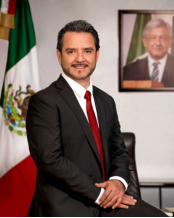
City Mayor: Francisco Antonio Villalobos Adán
Contact number: +52 (777) 329 5500, ext. 4438
Govt. Office Address: Motolinía #2 Col. Centro, Cuernavaca, Morelos.
FB: https://www.facebook.com/AntonioVillalobosAdan
Twitter: https://twitter.com/AntonioLobito01
Website: http://cuernavaca.gob.mx
